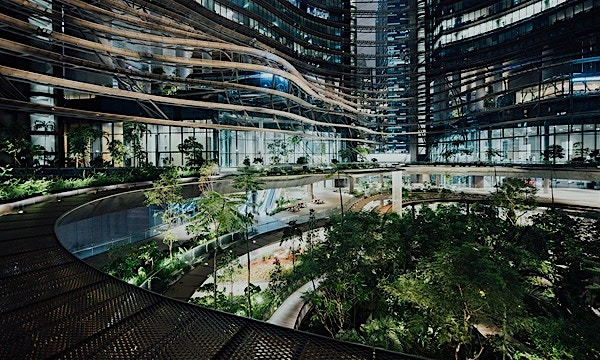The competition to place a bid in a new US federal program, that seeks to combat global warming with machines that can pull carbon dioxide (CO2) from the atmosphere, is intensifying after two startups and two universities expressed interest in applying for part of the $3.5 billion in funding to help build four direct air capture (DAC) facilities in the US
The US Department of Energy’s (DOE) Office of Clean Energy Demonstrations (OCED) announced the Regional Direct Air Capture Hubs program as part of the Biden-Harris Administration’s effort to launch four programs to build “commercially viable, just and responsible carbon dioxide removal industry in the United States.”
The largest program, in terms of dollars the Regional DAC Hubs program will build four domestic regional DAC hubs. Each hub will demonstrate direct air capture technology or a suite of technologies at commercial scale that has potential to capture at least one million metric tons of carbon dioxide annually and store that CO2 permanently in a geologic formation or through its conversion into other products.
Groups participating in the program
According to E&E News, only CarbonCapture Inc., a climate technology company based in California, is interested in submitting a bid. However, other interested parties in applying for funding include Sustaera Inc., a DAC technology startup based in North Carolina, the University of Houston and the University of Michigan in Ann Arbor.
“We are participating in various DAC hub applications,” said Sudarshan Gupta, a spokesperson for Sustaera told E&E News. “We are not allowed to share any names as a part of the agreement.”
The deadline for these groups to submit letters of intent to DOE is Feb. 17, with the full applications for the program due by mid-March.
CarbonCapture Inc. already has a hand in the DAC arena with the plans it announced just last year. Along with Frontier Carbon Solutions, CarbonCapture Inc. announced plans to build a massive direct air capture project, called Project Bisonin Wyoming. It is projected to be operational by late 2023 and remove five million metric tons of atmospheric CO2 annually by 2030.
Reducing our carbon footprint
Building carbon capture facilities is just one example of utilizing hardware to reduce our carbon footprint. Since January 2021, DOE has invested over $250 million in 62 research and development projects and front-end engineering design studies to improve carbon management approaches that include CO2 removal and carbon utilization projects.
In September of 2022, DOE invested $7 billion in carbon capture, transport and storage infrastructure. The funding was authorized and provided through Sen. Joe Manchin’s, D-WV, bipartisan Energy Act of 2020 and the Infrastructure Investment and Jobs Act.
The funding includes nearly $4.9 billion in funding to drive development and deployment of carbon capture systems at American power plants, with the goal of demonstrating the technology on coal and natural gas plants and industry facilities. Additionally, $2.1 billion will be used to support loans, loan guarantees and grants for shared carbon transport infrastructure.
More and more organizations are moving beyond simply recycling at the office to reduce their carbon footprint. Sustainable engineering has been a key component for companies and organizations meeting ESG goals. For example, HCLTech is aiming to be Net-Zero by 2040 and plans to move 80% of operations to renewable energy sources by 2030, in part by making energy efficient buildings a key priority. Additionally, to reach these milestones, renewables will be a top priority, followed by , eco-efficiency (water, waste, paper, etc.), EV, reduced emission from purchased goods and services and nature-based sequestering projects.





